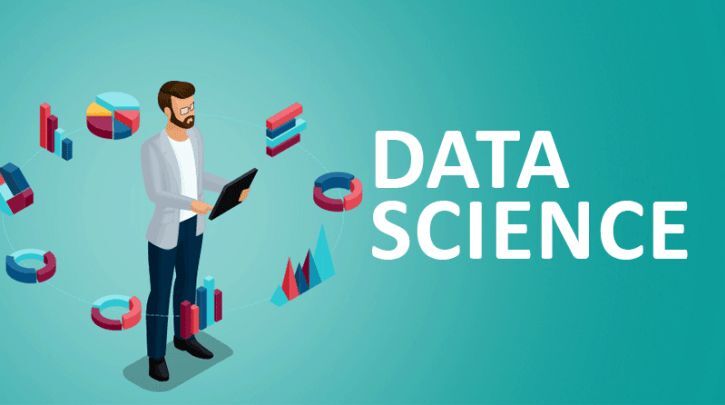The Data Science Life Cycle: From Raw Data to Insightful Results
 Brijesh Prajapati
Brijesh Prajapati
Data science is a transformative field that extracts valuable insights from raw data. Understanding the data science life cycle is crucial for anyone looking to leverage data effectively, whether in business, research, or other domains. This article outlines each stage of the data science life cycle, providing a comprehensive overview that is both easy to read and understand.
Introduction to the Data Science Life Cycle
The data science life cycle is a structured approach to solving data-related problems. It encompasses several stages, each with specific tasks and objectives. The key stages include:
Data Collection
Data Preparation
Data Exploration
Data Modeling
Model Evaluation
Deployment
Maintenance
Understanding these stages helps in systematically converting raw data into actionable insights.
Stage 1: Data Collection
Importance of Data Collection
Data collection is the foundation of the data science life cycle. Gathering data from various sources, such as databases, APIs, web scraping, and surveys, directly impacts the quality and quantity of data, which in turn influences the analysis and results.
Methods of Data Collection
Databases: Extract data from relational databases using SQL queries.
APIs: Utilize APIs to fetch data from online services.
Web Scraping: Collect data from websites using tools like Beautiful Soup and Scrapy.
Surveys: Conduct surveys to gather primary data.
Stage 2: Data Preparation
Data Cleaning
Data preparation involves cleaning the collected data to remove inconsistencies, errors, and duplicates. This stage is crucial because dirty data can lead to inaccurate results.
Data Transformation
Transform data into a suitable format for analysis. This may include normalizing data, handling missing values, and encoding categorical variables.
Tools for Data Preparation
Tools like Pandas in Python and Excel are commonly used for data cleaning and transformation. Data science training institutes in Patna and other cities in India often emphasize mastering these tools.
Stage 3: Data Exploration
Exploratory Data Analysis (EDA)
Exploratory Data Analysis (EDA) analyzes data sets to summarize their main characteristics, often using visual methods. EDA helps in understanding the underlying patterns and relationships within the data.
Techniques for EDA
Descriptive Statistics: Calculate the mean, median, mode, standard deviation, etc.
Data Visualization: Create charts and plots using tools like Matplotlib, Seaborn, and Tableau.
Correlation Analysis: Assess relationships between variables.
Stage 4: Data Modeling
Choosing the Right Model
Data modeling involves selecting and applying statistical or machine learning models to the prepared data. The choice of model depends on the problem type, such as classification, regression, or clustering.
Common Models in Data Science
Linear Regression: For predicting continuous outcomes.
Logistic Regression: For binary classification problems.
Decision Trees and Random Forests: For both classification and regression tasks.
K-Means Clustering: For unsupervised learning and clustering tasks.
Stage 5: Model Evaluation
Importance of Model Evaluation
Evaluating the model's performance is critical to ensure its accuracy and reliability. This stage involves comparing different models and selecting the best one based on specific metrics.
Evaluation Metrics
Accuracy: The ratio of correctly predicted instances to the total instances.
Precision and Recall: Metrics for classification problems, especially when dealing with imbalanced data.
Mean Squared Error (MSE): Measures the average squared difference between predicted and actual values in regression problems.
Stage 6: Deployment
Making the Model Operational
After evaluating and refining the model, deploy it into a production environment where it can process new data and generate predictions or insights in real time.
Deployment Techniques
Web Services: Create APIs to serve model predictions.
Batch Processing: Run the model on large datasets at regular intervals.
Integration with Applications: Embed the model into business applications for decision-making.
Stage 7: Maintenance
Monitoring and Updating the Model
Maintaining the deployed model involves regular monitoring to ensure it continues to perform well. As new data becomes available, retrain or update the model if necessary.
Handling Data Drift
Data drift occurs when the statistical properties of the target variable change over time, leading to degraded model performance. Continuous monitoring helps in detecting and addressing data drift promptly.
Conclusion
The data science life cycle is a systematic approach to transforming raw data into meaningful insights. Each stage, from data collection to maintenance, plays a vital role in ensuring the accuracy and reliability of the results. By mastering these stages, individuals and organizations can harness the power of data science to drive informed decision-making and innovation. Comprehensive courses covering these stages are available to help aspiring data scientists build a strong foundation in this field.
Understanding and effectively implementing the data science life cycle can significantly improve various domains, making it a valuable skill set in today's data-driven world. This approach is emphasized in many data science training institutes in Patna and other cities in India.
Subscribe to my newsletter
Read articles from Brijesh Prajapati directly inside your inbox. Subscribe to the newsletter, and don't miss out.
Written by

Brijesh Prajapati
Brijesh Prajapati
I'm a digital marketer eager to expand my skills and knowledge. Passionate about staying updated with the latest trends, I thrive on learning new techniques and strategies to enhance my expertise.